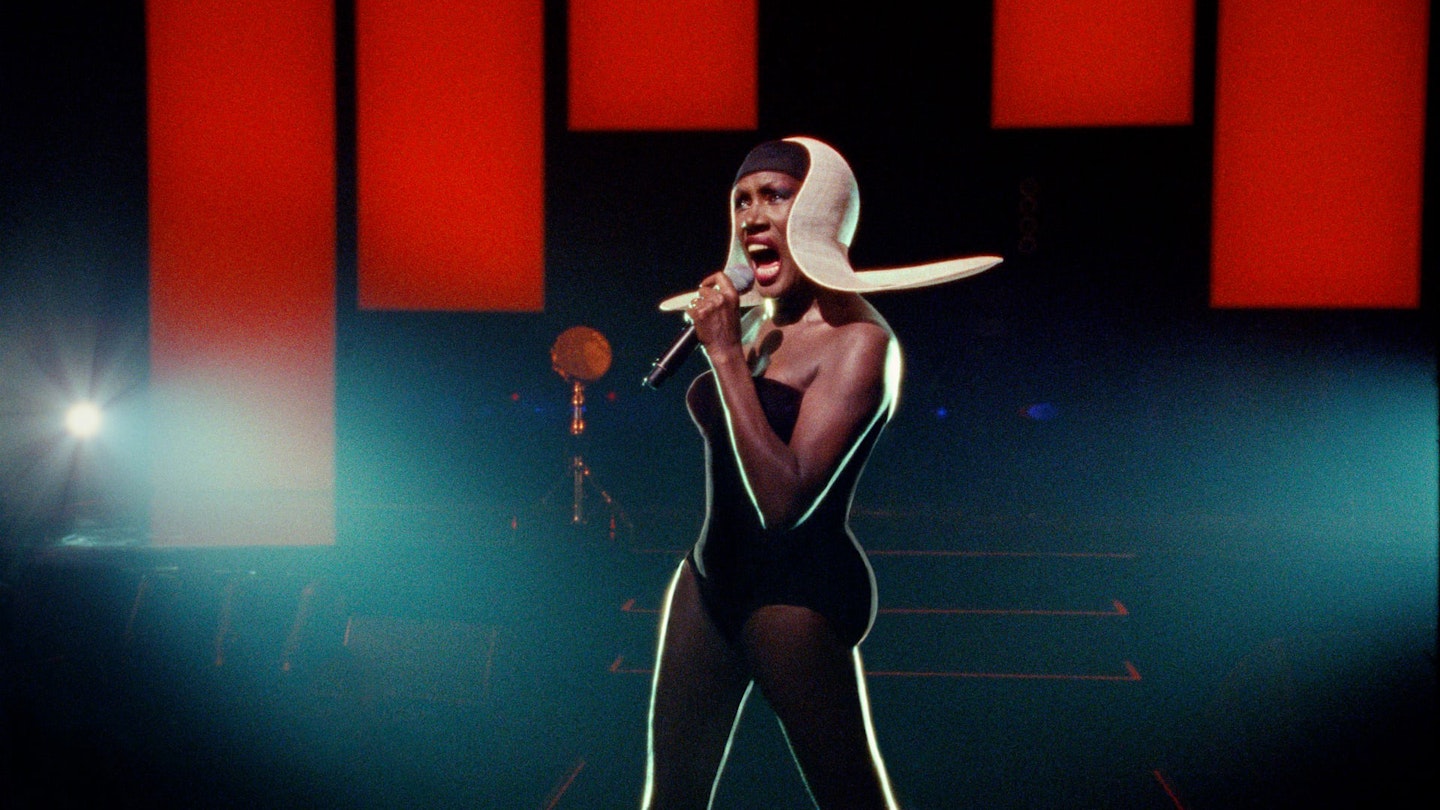Grace Beverly Jones is, for most, an enigma. There are of course the verifiable facts — born in Jamaica in 1948, grew up in Syracuse, New York, found fame as a model, musician and actor — but there’s much that is hidden. The Grace Jones we see is all persona — who is the real woman behind the new wave icon?
Sophie Fiennes’ documentary — made 40 years after the release of Jones’ first album, Portfolio — attempts to reveal the mother, daughter, lover and friend behind the mask. It’s a point underlined rather literally in the opening sequence — two intercut performances of Slave To The Rhythm showcasing not one but two elaborate masks as the seemingly ageless Grace hula-hoops her way through the song. Concert clips (tracks include Pull Up To The Bumper, La Vie En Rose and Love Is The Drug) stud the piece at regular intervals, and watching her on stage is as mesmerising as any Grace fan would expect; Jones is truly a unique entertainer, hypnotic, arresting, challenging.
A must for fans and an intriguing watch for the more casual viewer.
But the thesis here is to reveal the other Grace, and to do this Fiennes opts for candid glimpses of the star through fly-on-the-wall, vérité footage rather than to-camera interviews or talking heads. Much of this is filmed back with friends and close family in Jamaica. We see her tucking into grilled fish, licking her fingers as she catches up with the gossip. Elsewhere we’re party to a telephone spat with long-time collaborators Sly & Robbie, as her anxious colleague hisses out of shot, “Find out when they can come; don’t just piss him off!” In these moments, and behind the scenes in Paris as she continues on the publicity trail, there are some hints of chinks in the armour, not to mention flashes of impish humour (“I wish my pussy was this tight”, she says of a particularly tricky oyster). Most revealing are a handful of scenes where she remembers Mas P, her domineering step-grandfather. “We had to read things from the Bible while we were being beaten,” she and her siblings recall. There’s a suggestion that such treatment is in part responsible for the strong, implacable adult she became. Yet there are scenes of great tenderness too, not least Grace cradling and cooing to her baby granddaughter — soft as the breeze, to quote closing track Hurricane.
However, suggestion is what much of the new insight remains. Fiennes’ position as observer rather than interrogator offers little solid context, and can be distancing and confusing for the viewer, as if we’re overhearing half sentences rather than whole conversations. Which, in fact, we often are. It’s beautifully shot — night-time Jamaican vistas, misty, empty, the crickets chirping, or shots of Paris glittering at night, are hugely atmospheric — but again this adds to the feel of a mood-piece or vignette rather than biography.
Without doubt this is a must for fans and an intriguing watch for the more casual viewer. Yet come the end, for all the moments of candour and sneak peeks into Grace’s private moments, the impression left is still of that inscrutable, mercurial individual, the mask still firmly in place. Which, you suspect, is just how Grace wants it.
